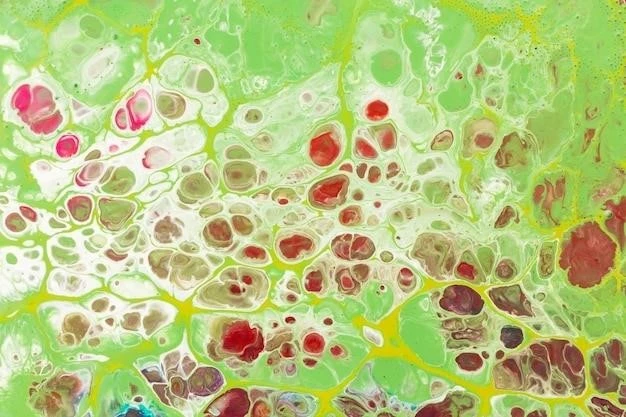Overview of Camptodactyly
Camptodactyly is a condition characterized by permanent flexion contractures of one or more fingers.
Definition of Camptodactyly
Camptodactyly is a condition characterized by permanent flexion contractures of one or more fingers. It typically affects the proximal interphalangeal joint, causing a bent or crooked appearance of the finger. This condition can lead to difficulties in performing daily tasks and may require medical intervention for management.
Causes of Camptodactyly
The causes of Camptodactyly are primarily genetic, resulting from abnormalities in the development of the hand muscles and tendons. Environmental factors may also contribute to the manifestation of this condition, although less common than genetic causes.
Genetic Causes
Camptodactyly is commonly associated with genetic mutations affecting muscle development, such as those impacting the function of specific genes involved in finger formation. These genetic abnormalities can lead to the characteristic finger deformities seen in individuals with Camptodactyly.
Environmental Factors
While genetic causes are predominant in Camptodactyly, certain environmental factors such as exposure to toxins or infections during pregnancy may play a role in the development of this condition. These external influences can potentially affect the musculoskeletal development of the fingers, contributing to the manifestation of Camptodactyly.
Treatment options for Camptodactyly
Treatment for Camptodactyly may include physical therapy, splinting, or surgical intervention depending on the severity of the condition and the individual’s needs. These approaches aim to improve finger function and correct deformities to enhance quality of life.
Physical Therapy
In the treatment of Camptodactyly, physical therapy plays a crucial role in improving finger flexibility, strength, and range of motion; Therapists design specific exercises to target affected muscles and joints, helping patients enhance hand function and manage the condition effectively.
Splinting
Splinting is a non-invasive treatment option for Camptodactyly that involves wearing custom-made splints to maintain finger alignment and prevent further contractures. By promoting proper finger positioning, splints help improve function and reduce discomfort associated with this condition.
Surgical Intervention
Surgical intervention for Camptodactyly may be considered in severe cases where conservative measures are ineffective. Procedures aim to release tight tendons, improve range of motion, and correct finger deformities. Surgeons customize the approach based on individual needs to optimize outcomes and enhance hand function.
Understanding Fibrous Tissue Hyperplasia
Fibrous Tissue Hyperplasia is a condition characterized by the excessive growth of fibrous connective tissue in the body.
Explanation of Fibrous Tissue Hyperplasia
Fibrous Tissue Hyperplasia is a condition characterized by the abnormal proliferation of fibrous connective tissue, leading to the formation of noncancerous growths. These growths can arise in various parts of the body and may present as nodules or masses. Treatment options depend on the location and size of the fibrous tissue hyperplasia.
Diagnosis of Fibrous Tissue Hyperplasia
Diagnosing Fibrous Tissue Hyperplasia typically involves clinical examination and imaging studies to assess the extent and characteristics of the fibrous tissue growths.
Clinical Examination
A clinical examination for Fibrous Tissue Hyperplasia involves a thorough assessment of the physical appearance and characteristics of the tissue growths. Healthcare providers may evaluate the size, location, texture, and any associated symptoms to aid in the diagnosis and treatment planning for the condition.
Imaging Studies
Imaging studies such as X-rays, CT scans, or MRI scans are utilized in the diagnosis of Fibrous Tissue Hyperplasia to visualize the extent of tissue growth, assess any structural changes, and determine the impact on surrounding structures. These studies provide valuable insights to guide treatment decisions and monitor the condition.

Management of Skeletal Dysplasia
The management of Skeletal Dysplasia involves a comprehensive approach that may include non-surgical interventions and surgical options tailored to individual needs.
Non-Surgical Approaches
Non-surgical approaches for Skeletal Dysplasia may involve physical therapy, assistive devices, pain management strategies, and lifestyle modifications to support optimal musculoskeletal function. These interventions aim to improve mobility, manage symptoms, and enhance quality of life for individuals affected by Skeletal Dysplasia.
Surgical Options
Surgical options for Skeletal Dysplasia may include procedures such as limb lengthening, corrective osteotomies, or joint fusions to address skeletal deformities and improve function. Surgeons collaborate with multidisciplinary teams to tailor surgical interventions to each patient’s specific needs and optimize outcomes in managing Skeletal Dysplasia.
Genetic factors in Skeletal Dysplasia
Skeletal Dysplasia often has a genetic basis, with mutations in specific genes influencing bone and cartilage development. These genetic factors can contribute to various skeletal anomalies, growth disturbances, and structural abnormalities, highlighting the importance of genetic testing and counseling in the management of Skeletal Dysplasia.
Surgical interventions for Skeletal Dysplasia
Surgical interventions for Skeletal Dysplasia aim to correct skeletal deformities, improve functionality, and enhance quality of life.
Orthopedic Procedures
Orthopedic procedures for Skeletal Dysplasia involve surgeries such as limb lengthening, joint stabilization, or correction of bone deformities. These specialized interventions are performed by orthopedic surgeons to address skeletal abnormalities, improve mobility, and promote optimal musculoskeletal function in individuals with Skeletal Dysplasia.
Reconstructive Surgery
Reconstructive surgery for Skeletal Dysplasia involves procedures to reshape or rebuild abnormal bone structures, correct limb discrepancies, and improve overall skeletal alignment. This specialized surgical approach aims to enhance function, mobility, and appearance in individuals affected by Skeletal Dysplasia.
